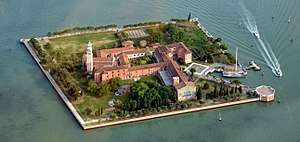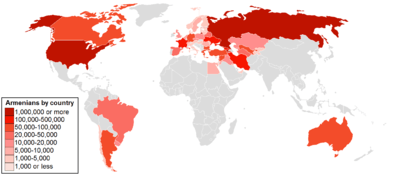Extant enclaves
Middle East
- Syria
There are several Armenian-populated villages in Syria: including Aramo,[9][10] Al-Ghanimeh (Ghnemieh),[10][11] Kessab[lower-alpha 2] (2,000–2,200)[13][14] in Latakia; and Yakubiyah in Idlib.[9] Aleppo has the Armenian neighborhoods of Al-Jdayde and Nor Kyough (Midan).[15][16]
- other countries
| Name |
Type |
Location |
Total |
Armenians |
% |
Ref |
|---|
| Anjar[17] |
town |
 Zahlé, Lebanon Zahlé, Lebanon |
2,400–4,000 |
~100% |
[18][19] |
| Armenian Quarter |
quarter |
Old City, Jerusalem[lower-alpha 3] |
2,424 |
500–1,000 |
21–41% |
[20][21][22] |
| Bourj Hammoud[23] |
city |
 Beirut, Lebanon Beirut, Lebanon |
150,000 |
110,000 |
73% |
[24][25] |
| New Julfa[26] |
quarter |
 Isfahan, Iran Isfahan, Iran |
12,000 |
N/A |
[27] |
| Vakıflı |
village |
 Hatay, Turkey Hatay, Turkey |
135 |
~100% |
[28] |
|
Post-Soviet states
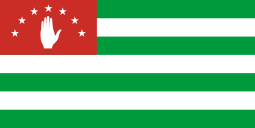 Abkhazia (de facto)[lower-alpha 4]
Abkhazia (de facto)[lower-alpha 4]
As of 2004, there were "around 50-60 Armenian villages" in Abkhazia.[29] According to the 2011 Abkhazian census, Armenians formed the majority of the population of the Sukhumi District (6,467 Armenians, 56.1% of the total 11,531), and plurality in Gulripshi district (8,430 Armenians or 46.8% of 18,032) and Gagra District (15,422 Armenians or 38.3% of 40,217).[30]

Javakheti (Javakhk) shown in red on the map of Georgia with
Samtskhe-Javakheti provincial borders outlined.
 Georgia
Georgia
| Name |
Type |
Location |
Total |
Armenians |
% |
Ref |
|---|
| Adlersky City District |
raion |
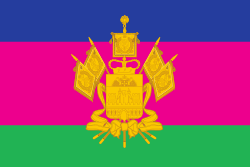 Sochi, Krasnodar Krai Sochi, Krasnodar Krai |
138,572 |
44,000–80,000 |
32%–58% |
[34][35][36] |
| Aykavan[37] |
village |
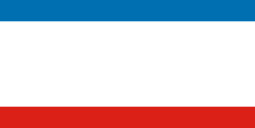 Crimea[lower-alpha 5] Crimea[lower-alpha 5] |
160 |
~100% |
[38] |
| Edissiya[39] |
village |
 Stavropol Krai Stavropol Krai |
5,657 |
5,377 |
92.7% |
[40] |
| Gaikodzor |
village |
 Anapsky District, Krasnodar Krai Anapsky District, Krasnodar Krai |
|
|
|
|
| Karabagly |
village |
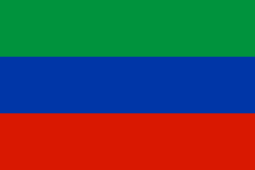 Dagestan Dagestan |
723 |
~400 |
56% |
[41][42] |
| Myasnikovsky District |
raion |
 Rostov Oblast Rostov Oblast |
39,631 |
22,108 |
56% |
[43] |
| Tuapsinsky District |
raion |
 Krasnodar Krai Krasnodar Krai |
62,400 |
13,700 |
22% |
[44] |
|
| Name |
Type |
Location |
Total |
Armenians |
% |
Ref |
|---|
| Glendale[45] |
city |
 Los Angeles, California Los Angeles, California |
190,000 |
100,000 - 120,000 |
53%–83% |
[46] |
| Little Armenia[47] |
neighborhood |
 Los Angeles, California Los Angeles, California |
21,600 |
N/A |
|
[48] |
| Watertown[49][50] |
city |
 Boston, Massachusetts Boston, Massachusetts |
33,000 |
2,700–8,000 |
8%–25% |
[51][52] |
|
Extinct enclaves
| Name (current & former) |
Type |
Current location |
Period |
% Armenian (date) |
Ref |
|---|
| Armanitola |
neighborhood/quarter |
 Dhaka, Bangladesh Dhaka, Bangladesh |
18th century |
|
[53] |
| Armenikend |
quarter |
 Nasimi raion, Baku, Azerbaijan Nasimi raion, Baku, Azerbaijan |
19th-20th centuries |
N/A |
|
| Nərimanov raion |
city district |
 Baku, Azerbaijan Baku, Azerbaijan |
mid-20th century |
27.6–47.6% |
[54][55][56][57] |
| Gherla (Armenopolis) |
city |
 Cluj County, Romania Cluj County, Romania |
17th century |
|
[58] |
| Kumkapı[59][60] |
quarter |
 Fatih, Istanbul, Turkey Fatih, Istanbul, Turkey |
|
N/A |
|
| Feodosia (Kaffa) |
city |
 Crimea (de facto) Crimea (de facto) |
15th century |
+65% |
[61] |
| Nakhichevan-on-Don |
city |
 near Rostov-on-Don, Don Host Oblast, Russia near Rostov-on-Don, Don Host Oblast, Russia |
1778–1928 |
30–58.7% |
[62][63] |
| Old Armenian Town |
neighborhood |
 Fresno, California, United States Fresno, California, United States |
|
|
|
|
Notes
- ↑ This article only lists ethnic enclaves in the Armenian diaspora. Many sources describe Nagorno-Karabakh as an Armenian ethnic enclave,[1][2] which it was during most of its existence as the Nagorno-Karabakh Autonomous Oblast (1923–91), when it did not border Soviet Armenia. Since the end of the 1988–94 war, the Nagorno-Karabakh Republic (NKR) has been largely integrated with the Republic of Armenia and the two today de facto function as a single entity. However, the NKR remains internationally unrecognized and is regarded by all UN members as de jure part of Azerbaijan.
- ↑ The Armenian population of Kessab was forced out in March 2014, during the Syrian Civil War.[12]
- ↑ The status of Jerusalem is disputed between Israel and the State of Palestine, but the Old City is de facto administered by Israel.
- ↑ Abkhazia is de jure recognized as part of Georgia by most countries, however, it is de facto independent.
- ↑ The Crimean Peninsula is disputed between Russia and Ukraine and is de facto part of Russia, but remains (for the most part) internationally recognized as de jure part of Ukraine. For more, see Political status of Crimea.
References
- ↑ Noel, Sid, ed. (2005). From Power Sharing to Democracy: Post-conflict Institutions in Ethnically Divided Societies. Montréal: McGill-Queen's University Press. p. 279. ISBN 9780773529489.
...an Armenian ethnic enclave (Nagorno-Karabakh)...
- ↑ Barry, Ellen (24 June 2011). "Azerbaijan and Armenia Fail to End Enclave Dispute". New York Times.
...Nagorno-Karabakh, an Armenian enclave...
- ↑ This New York Times article calls Alfortville "an Armenian neighborhood": "15 are hurt in Paris by 3 explosions in an Armenian neighborhood". New York Times. 4 May 1984.
- ↑ "The Armenians of France". Armenian General Benevolent Union. 1 March 1995. Archived from the original on 15 April 2014.
One-sixth of Alfortville's 36,000 population is Armenian...
- ↑ Dubouis, Kevin (18 April 2013). "Dubouis: Revoking Denial of Pride". The Armenian Weekly.
...the Armenian district of Issy-les-Moulineaux...
- ↑ Yessayan, Catherine (20 June 2012). "Armenians of Issy-les-Moulineaux". Asbarez.
Of the City's 63,000 population, about 5,000 are Armenians.
- ↑ Saryan, Levon A. (11 July 2011). "A Visit to San Lazzaro: An Armenian Island in the Heart of Europe". The Armenian Weekly.
- ↑ Cole, Teresa Levonian (31 July 2015). "San Lazzaro degli Armeni: A slice of Armenia in Venice". The Independent. Archived from the original on 3 November 2017.
- 1 2 Zaman, Amberin (8 April 2014). "Turkey losing propaganda war over Syrian Armenians". Al-Monitor.
...Kassab along with a few other Armenian villages — Aramo, Ghnemieh and Yacoubieh...
- 1 2 Cholakian, Hagop (18 June 2012). "Latin Rite Roman Catholics of Armenian Descent in Syria". Noravank Foundation.
...the Armenian populated villages Aramo, Ghnemiye and Arpali...
- ↑ "Armenian Populated Village in Latakia Liberated". Asbarez. 22 January 2016.
- ↑ Manjikian, Lalai (25 March 2014). "Kessab: Deep Roots Under Attack". The Armenian Weekly.
The predominantly Armenian enclave of Kessab is now emptied of its Armenian population that has been there for hundreds of years, after rebel forces descended on the region from Turkey.
- ↑ Sherlock, Ruth (14 April 2014). "Turkey 'aided Islamist fighters' in attack on Syrian town". The Daily Telegraph.
Almost all of the villages approximately 2,000 inhabitants had fled.
- ↑ Gilbert, Ben (7 May 2014). "Taking Refuge: Armenian Family Exiled For Third Time In Century". Al Jazeera.
...mostly Armenian Christian village of Kassab (population 2,200)...
- ↑ "Aleppo Under Fire: The Ruins of Armenian Neighborhoods". The Armenian Weekly. 5 June 2014.
...the predominantly Armenian neighborhoods of Nor Kyough (Meedan)...
- ↑ Arnold, David (24 September 2012). "In Battle for Aleppo, Armenians Seek Neutral Ground". Middle East Voices. Voice of America.
...the Armenian neighborhood of al-Midan...
- ↑ Kahana, Ephraim; Suwaed, Muhammad (2009). Historical Dictionary of Middle Eastern Intelligence. Lanham, Maryland: Scarecrow Press. p. 179. ISBN 9780810863026.
...Anjar, an Armenian village in the Bekaa Valley.
- ↑ Filian, Levon (Fall 2013). "AMAA News" (PDF). Paramus, New Jersey: Publication of the Armenian Missionary Association of America. p. 8. ISSN 1097-0924. Archived from the original (PDF) on 2014-07-14.
The Armenian population had dwindled to about 4,000.
- ↑ "Geography & Demographics of Anjar". Anjar Online. Archived from the original on 17 May 2014.
Nowadays, approximately 2400 people, 99.99% of them Armenians, live in Anjar.
- ↑ Beltran, Gray (9 May 2011). "Torn between two worlds and an uncertain future". Columbia University. Archived from the original on 30 May 2014.
Today, about 500 Armenians live in the Armenian Quarter.
- ↑ "The Armenian Quarter". Jewish Virtual Library. Archived from the original on 13 April 2014.
Currently, about one thousand Armenians live in the Armenian Quarter.
- ↑ "Old City Population Distribution and Density" (PDF). Jerusalem Old City: Urban Fabric and Geopolitical Implications. Jerusalem: International Peace and Cooperation Center. 2009. p. 22. ISBN 965-7283-16-7. Archived from the original (PDF) on 2013-09-28.
- ↑ Healy, Chris; Muecke, Stephen (2008). Cultural Studies Review. Melbourne University Publishing. p. 102. ISBN 9780522855081.
...in the Armenian neighborhood of Bourj Hammoud...
- ↑ Anthropological Quarterly. Catholic University of America Press. 46-47: 73. 1973.
Of the estimated 180,000 Armenians in Lebanon, 110,000 are concentrated in the Bourj-Hammoud and Dora quarters of Greater Beirut.
- ↑ "Local authorities taking account of the major urban risks "From a case study to a global approach" The example of the City of Bourj Hammoud, Lebanon" (PDF).
The city ... has a population of almost 150,000 hab.
- ↑ Canby, Sheila R. (2009). Shah ʻAbbas: the remaking of Iran. London: British Museum Press. p. 64. ISBN 9780714124520.
Called New Julfa, this area remains the Armenian quarter of Isfahan to this day.
- ↑ Petrosyan, David (1998). Армянская община в Иране (in Russian). Institute for Central Asian and Caucasian Studies.
...еще 10-12 тысяч - в Исфагане (армяне называют его Новой Джугой)...
- ↑ Kanbolat, Hasan (2 October 2012). "Syrian Conflict Taking Toll on Turkey's Last Armenian Village". Al-Monitor.
Vakifli, a village in Hatay province, is Turkey's sole remaining Armenian village. Home to just 135 people...
- ↑ Tchilingirian, Hratch. "The Armenian community in Abkhazia Today". Armenian Reporter International. Archived from the original on 30 May 2014.
There are now around 50-60 Armenian villages in Abkhazia...
- ↑ "Итоги переписи населения Республики Абхазия 2011 года [Results of census of Republic of Abkhazia in 2011]" (in Russian). Sukhumi: Abkhazian Office of State Statistics.
- ↑ Zenian, David (1 September 1992). "Havlabar: A Little Armenia on the hill". AGBU News Magazine.
- ↑ Hakobyan, Julia (28 September 2007). "Havlabar: Armenian community in Tbilisi pays the price of urbanization". ArmeniaNow.
- ↑ "Ethnic Groups by Major Administrative-territorial Units" (PDF). National Statistics Office of Georgia.
- ↑ Schreck, Carl (5 May 2006). "Sochi's Armenian Diaspora Weeps". The Moscow Times. Archived from the original on 30 May 2014.
...Sochi's Adler district, home to about 80,000 ethnic Armenians...
- ↑ Rakachev, Vadim. "Этнодемографические изменения а Краснодарском Крае, 1989-1999 годы [Ethnodemographic changes in Krasnodar Krai in 1989-1999]" (in Russian). Archived from the original on 25 May 2014.
Обращает на себя внимание резкий рост армянского населения в Сочи и, в частности, в Адлерском районе, где оно увеличилось на 17,5% и составило 31,8% к общему количеству жителей района.
- ↑ "Оценка численности населения на 1 января 2014 года по муниципальным образованиям Краснодарского края [Estimated population on January 1, 2014 by the municipalities of Krasnodar Region]" (in Russian). Russian Federal State Statistics Service. 15 April 2014. Archived from the original on 14 June 2014.
- ↑ Маленькая Армения в Крыму. podrobnosti.ua (in Russian). 27 June 2008.
- ↑ Трудовской сельский совет (in Russian). Website of the Simferopol district of the State Administration of the Autonomous Republic of Crimea. Archived from the original on 2014-06-12.
- ↑ Армяне Ставропольского края отметили 210-летие села Эдиссия (in Russian). Caucasian Knot. 2 September 2007.
...армянского поселения Эдиссия - одного из старейших армянских поселений на Юге России.
- ↑ Том 3 книга 1 «Национальный состав и владение языками, гражданство»; таблица 4 «Национальный состав населения Ставропольского края по городским округам, муниципальным районам, городским населенным пунктам, сельским населенным пунктам с численностью населения 3000 человек и более»
- ↑ Численность населения на 1 января 2014 года по сельским поселениям Республики Дагестан
- ↑ Данные Всероссийской переписи населения 2002 года: таблица 02c. М.: Федеральная служба государственной статистики, 2004.
- ↑ Итоги всероссийской переписи населения 2010 года по Ростовской области: Национальный состав и владение языками, гражданство (PDF) (in Russian). Russian Federal State Statistics Service. pp. 260–1.
- ↑ http://www.noravank.am/rus/issues/detail.php?ELEMENT_ID=3048#5_b
- ↑ Bittman, Mark (4 July 2013). "This Armenian Life". New York Times.
Among those cities is Glendale ... a center of the Armenian diaspora and home to one of the world's largest Armenian populations outside Armenia.
- ↑ Casey, Nicholas (25 April 2009). "In Armenian Enclave, Turkish Deal Arouses Suspicion". The Wall Street Journal.
This Los Angeles suburb is home to one of America's most robust Armenian diaspora communities, with 80,000 to 100,000 ethnic Armenians making up about a third of the population.
- ↑ "Part of East Hollywood Is Designated 'Little Armenia'". Los Angeles Times. 7 October 2000.
- ↑ "Little Armenia neighborhood in Los Angeles, California (CA), 90027, 90029 detailed profile". City-Data.
Population: 21,600
- ↑ Howe, Jeff (20 April 2013). "Captured in Watertown". The New Yorker.
...Watertown is one of the largest Armenian enclaves in the U.S...
- ↑ Kevonian, Tamar. "Finding the Passion". Asbarez.
... Boston ... Watertown, the Armenian enclave of the city...
- ↑ Watertown in Armeniapedia.org
- ↑ Armenians in Watertown, MA in Hayk the Ubiquitous Armenian
- ↑ Lawson, Alastair (10 January 2003). "The mission of Dhaka's last Armenian". BBC News.
- ↑ Город Баку: 1939 (in Russian). 1939.
- ↑ Город Баку: 1959 (in Russian). 1939.
- ↑ Город Баку: 1970 (in Russian). 1939.
- ↑ Город Баку: 1979 (in Russian). 1939.
- ↑ Steve Kokker; Cathryn Kemp (2004). Romania & Moldova. Footscray, Victoria: Lonely Planet. p. 159. ISBN 9781741041491.
Gherla Once a predominantly Armenian settlement called Armenopolis in the 17th century...
- ↑ Schäfers, Marlene (26 July 2008). "Managing the difficult balance between tourism and authenticity: Kumkapı". Hürriyet Daily News. Archived from the original on 2013-06-03.
Kumkapı, since then, has been dominated by Armenians and Greeks. Over the centuries, the quarter's population retained this ethnic-linguistic characteristic—in fact, as late as the 1950s, Kumkapı was still known as an Armenian quarter. Starting in the 1960s, however, Kumkapı's Armenian population began to decrease, with people moving abroad to Europe or America or simply to other quarters of the city, like Samatya, Yeniköy or Bakırköy.
- ↑ Nahai, Gina B. (2000). Moonlight on the Avenue of Faith. New York: Washington Square Press. p. 219. ISBN 9780671042837.
Istanbul's Armenian ghetto, the Kumkapi bordered the wholesale fish market and was populated almost entirely by Armenians.
- ↑ Этнография народов Крыма: Армяне (in Russian). Tavrida National V.I. Vernadsky University. 1999. Archived from the original on 2014-06-08.
В 30-е гг. XIV в. армянские колонии Крыма пополнились переселенцами из Ак-Сарая (выходцы из г. Ани), в 70-е гг. XV в. из 70- тысячного населения Кафы 2/3, т.е. свыше 46 тыс., составляли армяне.
- ↑ (in Russian) Первая всеобщая перепись населения Российской Империи 1897 г. Распределение населения по родному языку и уездам 50 губерний Европейской России As of 1897, the total population was 28,427, Armenians composed 29.1% of the population with 8,277 people
- ↑ Weinberg, Leonid (1897). "Нахичевань-на-Дону (Nakhichevan-on-Don)". Brockhaus and Efron Encyclopedic Dictionary Volume XXa. pp. 705–706.
|
|---|
| |
Traditional areas of
Armenian settlement | |
|---|
| Caucasus | |
|---|
| Former Soviet Union | |
|---|
| Americas | |
|---|
| Europe | |
|---|
| Middle East | |
|---|
| Asia | |
|---|
| Africa | |
|---|
| Oceania | |
|---|
